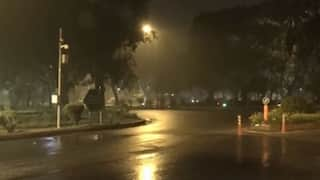Experts to assess mountain agriculture status in Arunachal

Pradeep Kumar
Itanagar 9Arunachal Pradesh) [India], June 13 (ANI): A team conducting a study on status of mountain agriculture in the Indian Himalayas is expected to visit Namsai and Wakro (Anjaw district) between June 12 and June 16, Department of Agriculture Advisor A K Purakayastha said.
Purakayastha, who is the state's nodal officer for the study, said the team would include its chairman Dr.Tej Pratap, former vice chancellor of Himachal Pradesh Agricultural University and state's counselor Fantry Mein Jaiswal, who is also chairperson of Food Security Development- Arunachal, engaged in conducting studies on various aspects of Himalayan states.
The study to cover in 10 Himalayan states has been sponsored by Food & Agriculture Organisation of United Nation, he informed.
However, state Agriculture and DoTCL Minister Wangki Lowang on being told by Purakayastha about the visit of the team on Saturday urged him to include Tirap district in its study.
Pointing out that food production ensures social security of the nation, Lowang cited the example of Tirap, where youths of areas having better agriculture and horticulture productions have not go wayward while the younger generation of non-productive areas have been compelled to fend for themselves for insecurity in sustained supply of food items.
Informing that the team would conduct visits many times, Purakayastha assured to convey his advice to the team chairman. He spoke to ANI today before leaving on his state tour..
It may be mentioned here that Indian Himalayas cover an area of 53.8 million hectare, approximately 16 percent of the total geographical area of the country. About 15% of the area is permanently covered with snow and provides a perennial flow of water, 1,200 cu km annually, to the vast lndo-Gangetic plains (Chandra 1994). This region is home to 33.8 million people but sparsely populated with an overall population density of 62.7 per 1,000 ha.
Agriculture is the main occupation of the mountain population, providing direct employment to about 71% of the working population. Agriculture is the primary sector of the economy, contributing 45% to the total regional income of the inhabitants. The net cultivated area is higher in the western Himalayan region (15.8% of the total geographical area) than in the north-eastern part (9.8%). The net cultivated area varies from 2. 7% in Arunachal Pradesh to 40. 9% in the Darjeeling district of West Bengal. Forest is the major land use and accounts for nearly 59% of the total area of the Indian Himalayas.
It may be recalled here that Union MoS for Agriculture and Food Processing Industries had inaugurated a two-day workshop on "Mountain Agriculture in Himalayan Region: Status, Constraints and Potentials", organized by Central Soil and Water Conservation and Research and Training Institute in association with Himalayan Environmental Studies and Conservation Organization (HESCO) at Dehradun on 02.04.11. (ANI)
This story has not been edited. It has been published as provided by ANI
Trending News
Top Headlines





























